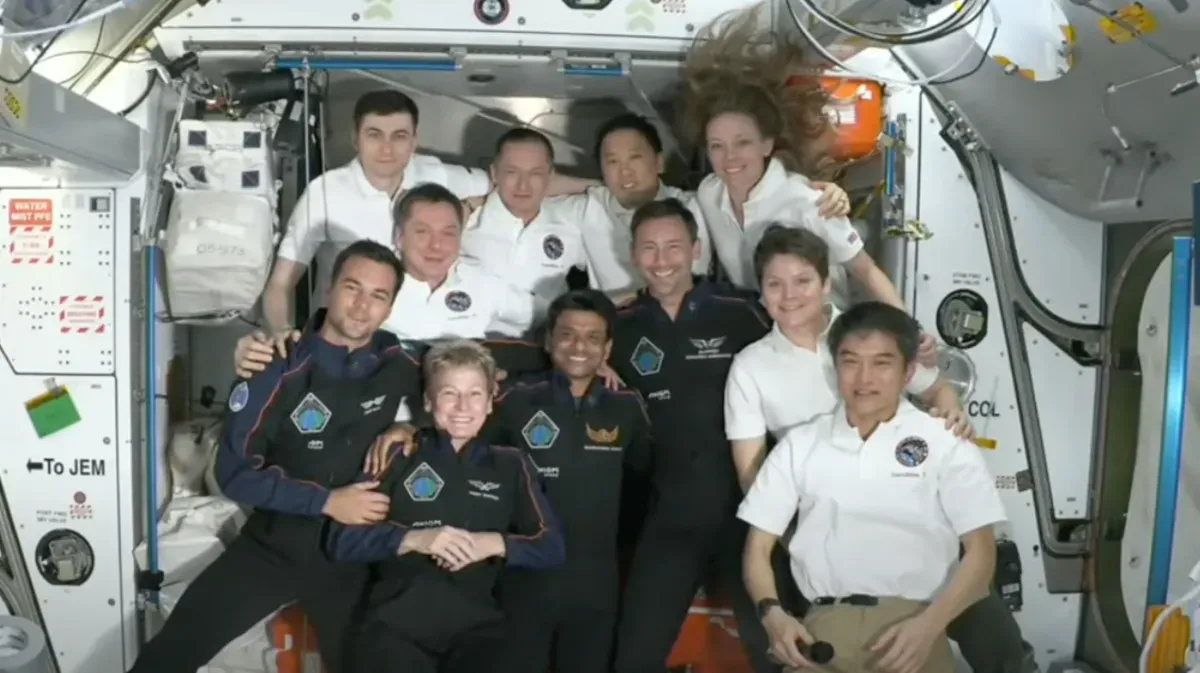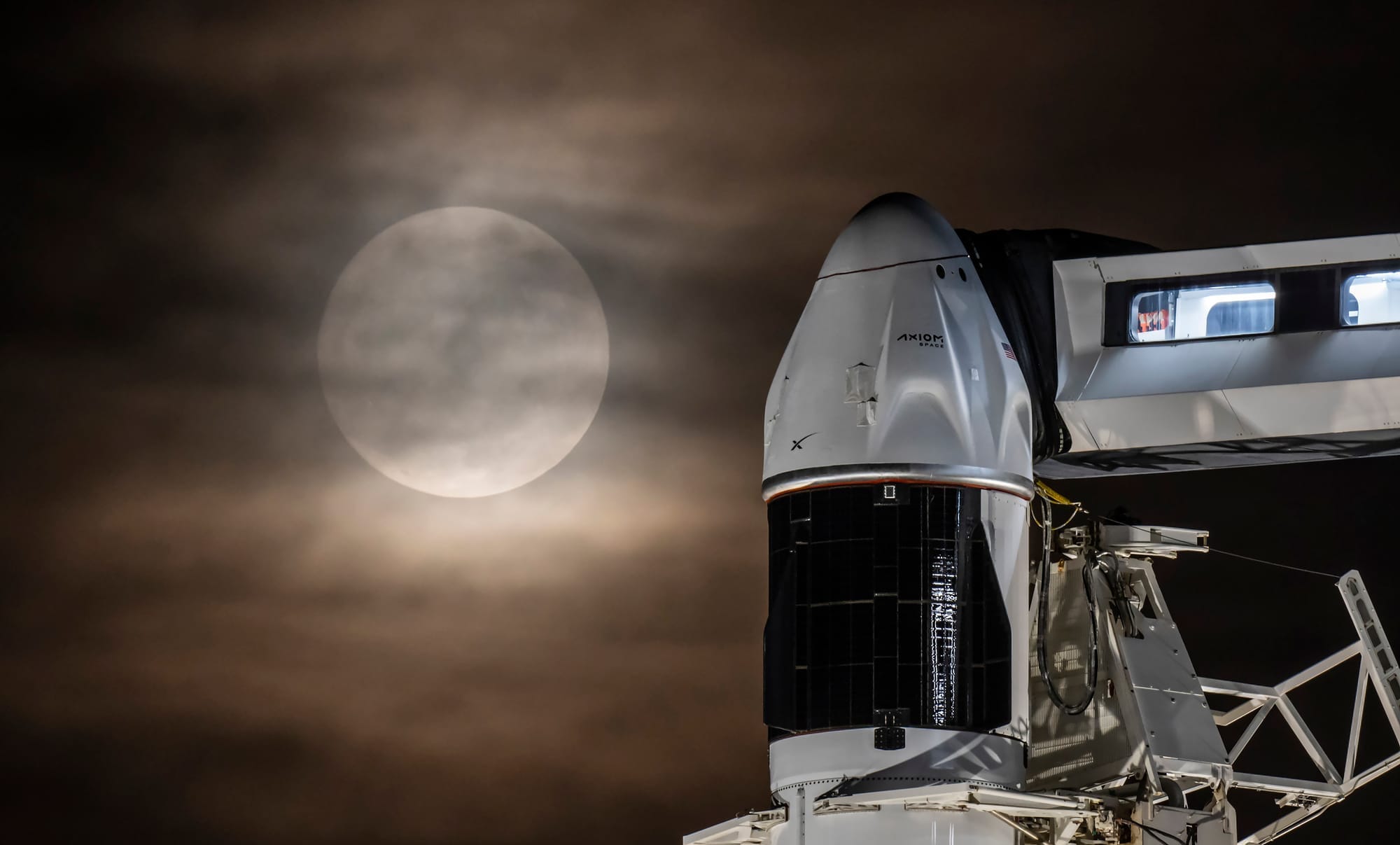Table of Contents
NASA's SpaceX Crew-10 mission has lifted off from Launch Complex 39A at 23:03 pm Universal Coordinated Time with Crew Dragon 'Endurance' atop of a Falcon 9 rocket. Onboard Crew Dragon 'Endurance' are four astronauts, NASA's Anne McClain and Nichole Ayers, JAXA's Takuya Onishi, and Roscosmos' Kirill Peskov.
Liftoff of Crew-10! pic.twitter.com/OOLMFQgA52
— SpaceX (@SpaceX) March 14, 2025
Falcon 9 lifting off from Launch Complex 39A, via SpaceX on Twitter.
At present, the Crew-10 mission is expected to dock to the International Space Station's Harmony module around twenty-eight hours after liftoff. Once docked, the Crew Dragon spacecraft and its crew will remain with the station until their departure in July.
For the first time with Crew Dragon, Crew-10 will return to Earth with a splashdown in the Pacific Ocean. SpaceX has shifted its Dragon recovery operations from the coasts around Florida to California after various pieces of debris from the spacecraft's service module survived reentry, and landed inside the United States.
The Crew-10 mission also signifies a return to normal crew rotations aboard the station, as the four incoming crew are reliving Crew-9's Nick Hague and Aleksandr Gorbunov as well as Starliner's Suni Willaims and Butch Wilmore. Suni and Butch have been onboard the station for eight months after Boeing's Starliner spacecraft was deemed unfit to return the duo after three months into an eight day mission.
Crew Dragon 'Endurance' is supporting this approximately five-month mission as its fourth trip into orbit. 'Endurance' has previously supported NASA's Crew-3, Crew-5, and Crew-7 missions, spending 532 days in orbit.
Supporting this launch was Falcon 9 Booster B1090 for its second launch and landing. Following staging and a boost back burn, B1090 headed back to Cape Canaveral to touch down at Landing Zone 1.
NASA's Crew-10 mission, the tenth operational NASA Commercial Crew Program mission to take place, and the twelfth carrying humans with the Crew Dragon Demo-2 mission in 2020 and Starliner's problematic Crewed Flight Test in the middle of last year. With Crew-10, SpaceX has now supported sixteen crewed missions with its Crew Dragon spacecraft.
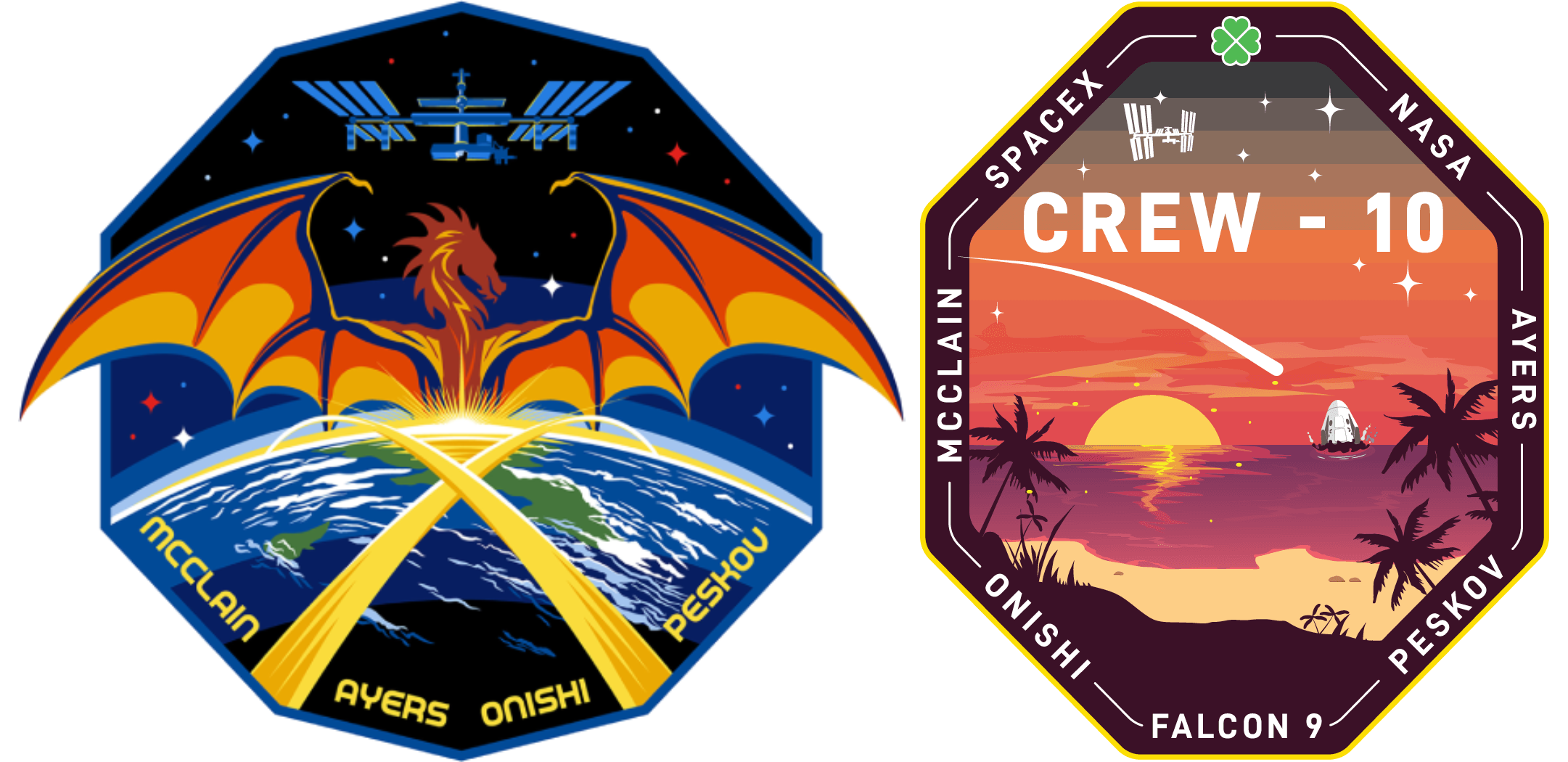
Who's on board?
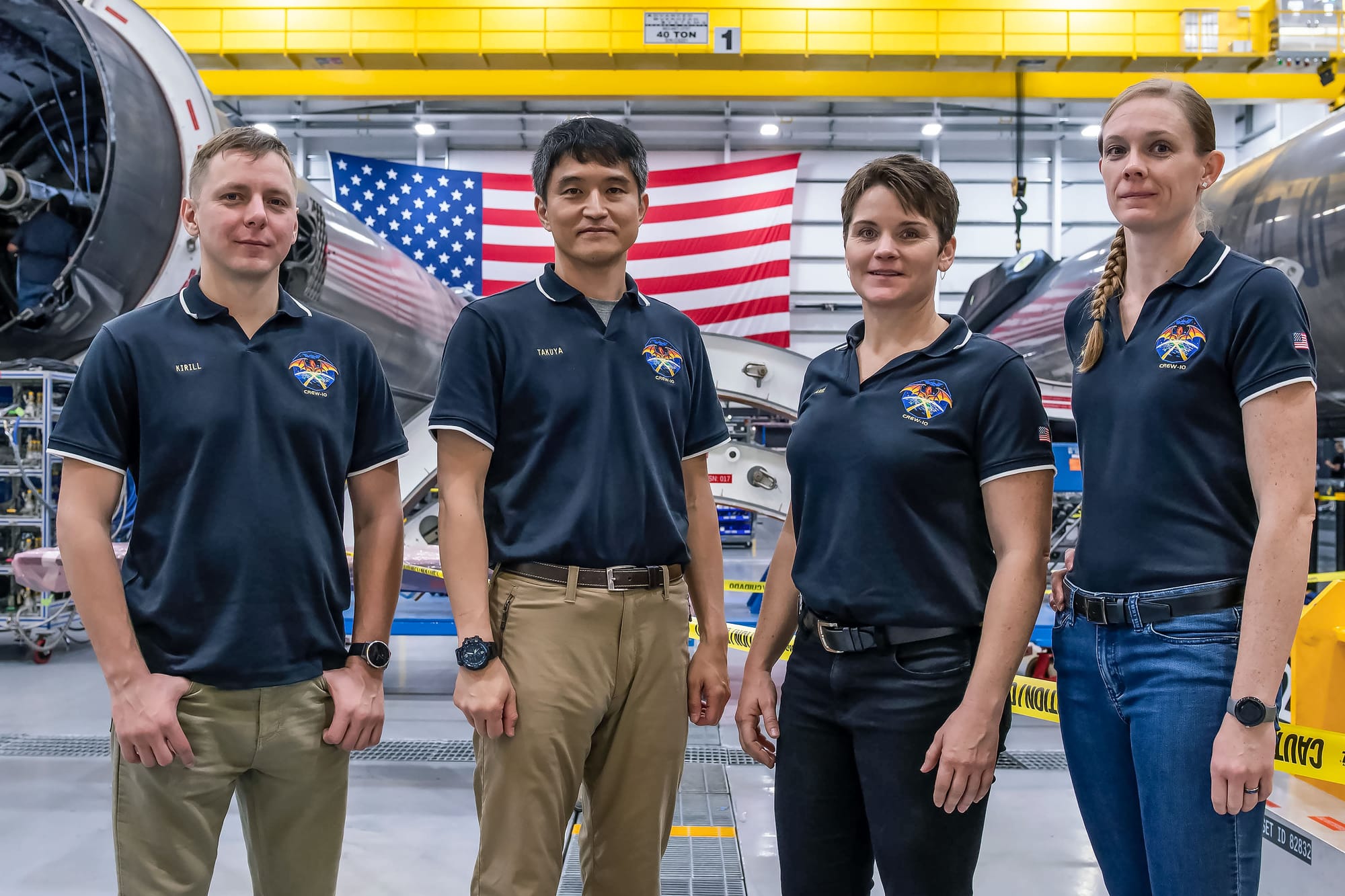
Anne McClain is the Commander of the Crew-10 mission for her second mission to the International Space Station. McClain previously spent 203 days onboard the station as part of the Soyuz MS-11 mission, during which she performed two spacewalks. In June 2013 McClain was selected as a NASA astronaut, before which she served in the U.S. Army. Prior to that she earned a Master's of Science in aerospace engineering from the University of Bath and a Master's of Science in international relations from the University of Bristol, both in the UK.
Nichole Ayers is the Crew Dragon Pilot for the Crew-10 mission, making her first trip into space. Before being selected as a NASA astronaut in December 2021, Ayers served with the U.S. Air Force as an instructor in both the T-38A and F-22 Raptor. During her time in the Air Force, Ayers earned a bachelor’s degree in mathematics and later a master’s degree in computational and applied mathematics from Rice University, in Houston, Texas.
Takuya Onishi is an astronaut from the Japan Aerospace Exploration Agency (JAXA) making his second trip to space as a Mission Specialist for the Crew-10 mission, previously he spent 115 days aboard the station for the Soyuz MS-01 mission. Prior to becoming an astronaut, Onishi earned a Bachelor of Engineering degree in Aeronautical and Space Engineering from the University of Tokyo.
Kirill Peskov is a Russian cosmonaut making his first trip to space as a Mission Specialist for the Crew-10 mission, having been selected for cosmonaut training in 2018. Before becoming a cosmonaut, Peskov earned a degree in Engineering from the Ulyanovsk Civil Aviation School.
What is Crew Dragon?
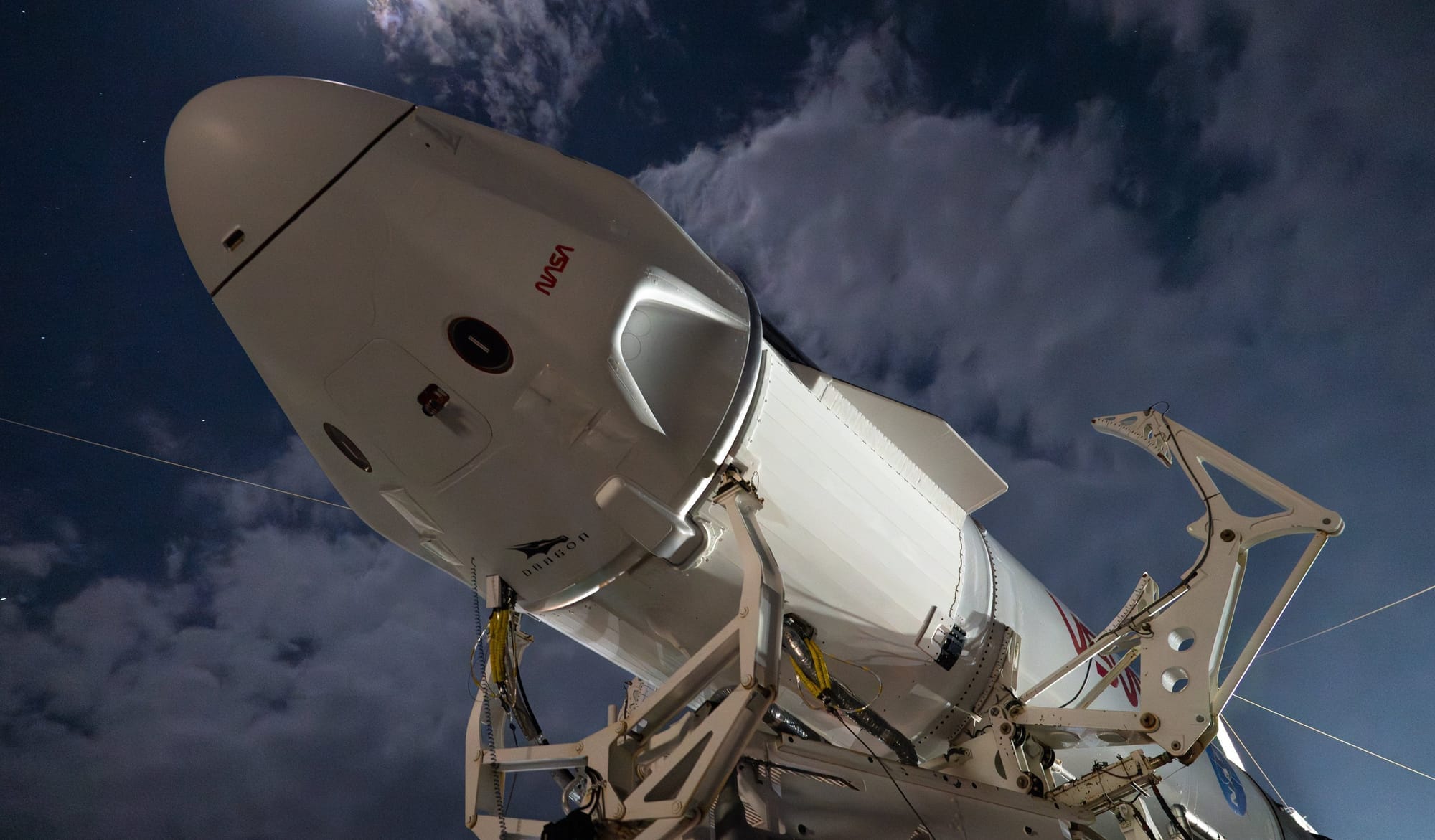
Crew Dragon, or Dragon 2, is a partially reusable spacecraft developed by SpaceX. The primary use for Crew Dragon is to send crew to and from the International Space Station. SpaceX also performs free-flight missions with the spacecraft.
Crew Dragon consists of the capsule and trunk. The trunk is used to store unpressurized cargo as well as have solar panels mounted on one side, to generate power, and radiators on the other, to dissipate heat generated inside. The trunk is not reused and burns up in the atmosphere after each mission. The capsule is where the crew will be during launch, landing, and while on their way to space.
Unlike the original Dragon capsule, the Crew Dragon capsule has a launch abort system consisting of eight SuperDraco engines. This abort system can also be used to bring the capsule to a soft touchdown in the event of four parachute failures. The capsule also has a nosecone that will fold out of the way in space to protect the docking hardware and forward-facing thrusters during launch and landing. The forward-facing thrusters are the main propulsion system for performing maneuvers while in flight. Up to four parachutes will deploy from the capsule during descent to allow it to splash down for recovery.
Crew Dragon was developed as part of NASA's Commercial Crew Program to regain crew access to the International Space Station from the United States of America after the retirement of the Space Shuttle. SpaceX currently has four active Crew Dragon capsules; Endeavour, Resilience, Endurance, and Freedom. A fifth Crew Dragon capsule is under construction and is expected to be finished in 2025.





